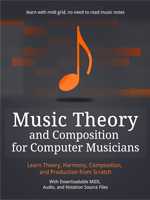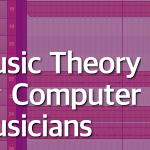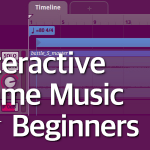In this series of short articles, we already covered the strings section and the woodwinds section. Now it is time to talk about the brass section, which adds power to the orchestra, but which can also provide wonderful, mellow moments in your music.
The Brass Section
Brass can be quite a challenge to work with to get this nice, cinematic sound. These days it is overdone in many of the scores, screaming in your ears, but if you use it the right way, your orchestral pieces will become much richer in texture content.
Brass is quite a homogeneous section of the orchestra – not as great as strings, but not as terrible as the woodwinds. It’s somewhere in the middle. Almost all brass instruments work in the same way, and thus they have a similar timbre. An exception is a French Horn, which, considered to be a woodwind, can produce a slightly different timbre than other brass instruments.
The loudest section of the orchestra is the percussion section. And the brass section is the second loudest section. While many orchestral scores shows us that brass can play loud, aggressive and powerful parts, it is very important to know that brass is also capable of very soft dynamics. The overall dynamic range of this section is incredible, as it can offer you so many various textures. It can play emotional, soaring melodies with horns and trombones in unison. It can shape the feeling of militaristic heroism with trumpets. It can create dark textures with low brass instruments. It can play melancholic melodies with soft horns. It is a very lyrical section.
When it comes to brass section and classic Hollywood sound, you should study the older Hollywood scores, such as these made by John Williams, James Horner and both Goldsmiths. In scores by those composers you will hear various uses of the brass in all of its dynamic range. Of course, if you want to compose only trailer music, working with brass will be much easier ;).
In the score, these instruments are placed below the winds. Thus, they become the second section on the score. You may to the same in your DAW template. Here is the order of the brass in the score and the orchestral template you should prepare:
- French Horns (we place French Horns at the top, because they are considered to be a woodwind instrument, or at least a transition instrument between the winds and the brass)
- Trumpets
- Trombones
- Bass Trombone
- Cimbassi
- Tuba
On the stage, brass sits in the middle, behind the winds, and the instruments are slightly panned from left to right.
The brass section is made of the following instruments:
- 3-4 Trumpets
- 3-6 French Horns (but sometimes you can have a different setup, such as 5 horns, or even 12 horns)
- 2 Trombones
- 1 Bass Trombone
- 1 Tuba
Auxiliary instruments, such as Cimbassi, can sometimes be used, but most virtual libraries do not offer anything but the core instruments.
Individual Instruments
Let’s take a short look at individual instruments of the brass section.
- French Horns – This is a well-known instrument from epic music, and modern cinematic scores, but do not be mislead, it is a very versatile instrument capable of playing very soft dynamics and very powerful dynamics as well. Depending on the circumstances, it can either play mellow, warm, soft lines, or strong, bright and powerful melodies that can be heard over the entire orchestra. French Horns are are often used along the winds, to provide additional timbre for these instruments. It can play powerful melodies in unison, separate horns can be arranged to play chords, too. It is a wonderful solo instrument, so don’t be afraid to use it in this way, too. French Horns can also provide wonderful accompaniment, either soft or stronger, for other instruments.
- Trumpets – This is the smallest of the brass instruments, and it has a bright sound. It is very agile, capable of playing dynamic melodies, and it’s also very loud, even when the entire orchestra plays in unison. If your orchestra plays very loud, a trumpet section can still be heard. Since there are a couple of these instruments, you can arrange entire chords to be played only by the trumpets.
- Trombones – In modern orchestra, we use tenor and bass trombones. Trombones can produce very powerful, bright sound, but can also play softer, warmer dynamics. The bass trombone usually doubles the tuba line, or actually plays the bass line if there is no tuba part.
- Cimbassi – This is a contrabass trombone, which uses valves instead of slide.
- Tuba – A tuba is the bass instrument of the brass section, and thus it usually plays the bass line. It is rarely used for solo melodies. A tuba requires a lot of breath, so don’t write long notes for this instrument. It can also be slow to response, so be careful when writing fast short notes.
Brass section can be used for many purposes. It can add color to your overall texture. It can play lead melodies, chords or general accompaniment. It can provide an underlying gentle and mellow texture, or add huge power to the tutti passages.
Like in case of all other sections, play around with these instruments, notice their sound quality and timbre in various registers, and study the scores to learn how to use the brass.
Articulations
Similarly to woodwinds, brass basically plays two types of notes: long notes and short notes.
- Sustain notes – sustained notes, that can be played with or without legato. With legato, they can be considered as slurred passages.
- Shorts – various types of shorts that can emulate non-slurred notes.
- Thrill – a thrill on brass is possible. You play two notes, one after another, very quickly.
Unlike winds, we seldom use vibrato in case of brass. On the other hand, brass, like winds, can provide us with various “special effects” such as clusters or rips.
Like in case of strings, brass instruments can be muted – this makes the sound softer and alters the timbre of the instrument. Not every brass library offers mute articulation, though. We mainly mute French Horns and Trumpets.
Tips for Realism and MIDI Programming of Brass
Once again, there are things to remember when programming brass section in the DAW:
- Just like in case of woodwinds, brass players need to breath. You need to program pauses for them to do so.
- Brass often plays short notes – it’s a little thing, but try it out, limiting the number of long sustained notes in this section.
- A single brass instrument cannot play more than one note at the time. You need to keep this in mind when writing for each of the instrument’s groups. For example, if your orchestra contains only 3 trumpet players, you cannot write more than 3 parts for trumpets.
- When using a mute, allow some time for the player to prepare the instrument for a change in articulation.
Virtual Libraries for Brass Section
There are many brass libraries, and here are only a few examples.
- CineBrass CORE – My favorite library, it has a nice, classic Hollywood sound, and offers a wide dynamic range with all the basic instruments and articulations. If you like it, be sure to check their CineBrass PRO and/or CineBrass 12 Horns libraries, too.
- Cinematic Studio Brass – One of the newer and already very popular library from the creators of Cinematic Strings 2 and Cinematic Studio Strings.
- Spitfire Studio Brass – A more affordable option for a good start, brass library from renowned Spitfire Audio.
- Bravura Scoring Brass – An older library, which has an interesting, Hollywood-like sound.
- Symphony Series Brass – From Native Instruments, a big library that also has a smaller, more affordable version in Brass Essential package, although with limited articulation.
- Century Brass – Some people love 8Dio products, some don’t – but it’s still a popular library worth of mentioning.
***
In the next part of this series, we will discuss both the percussion section and an optional choir.
Don't forget to become a fan on Facebook and subscribe to new posts via RSS or via email.







